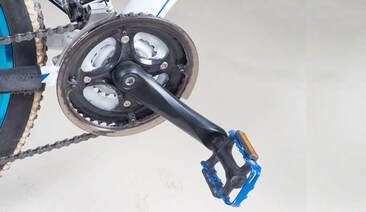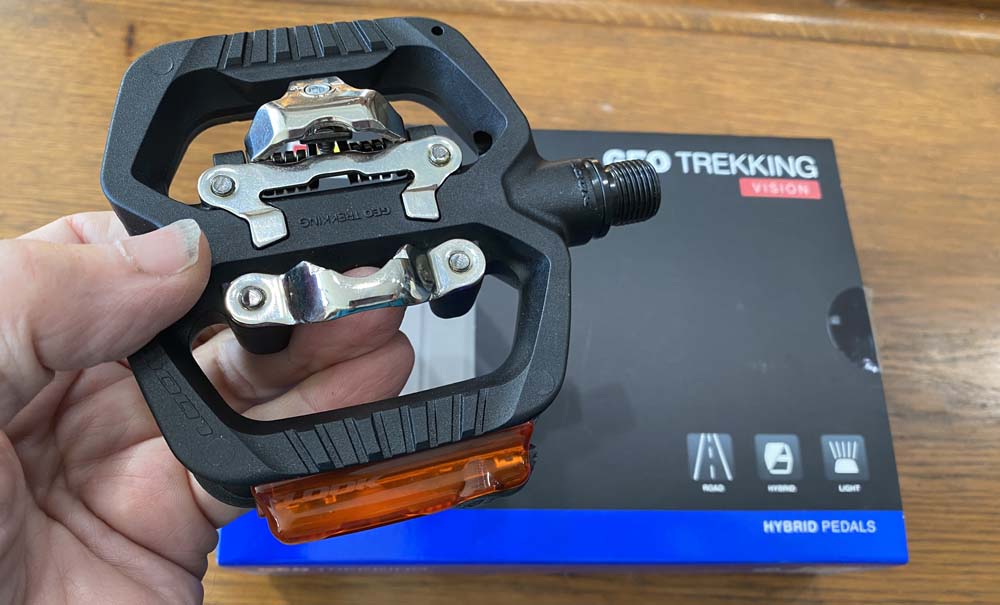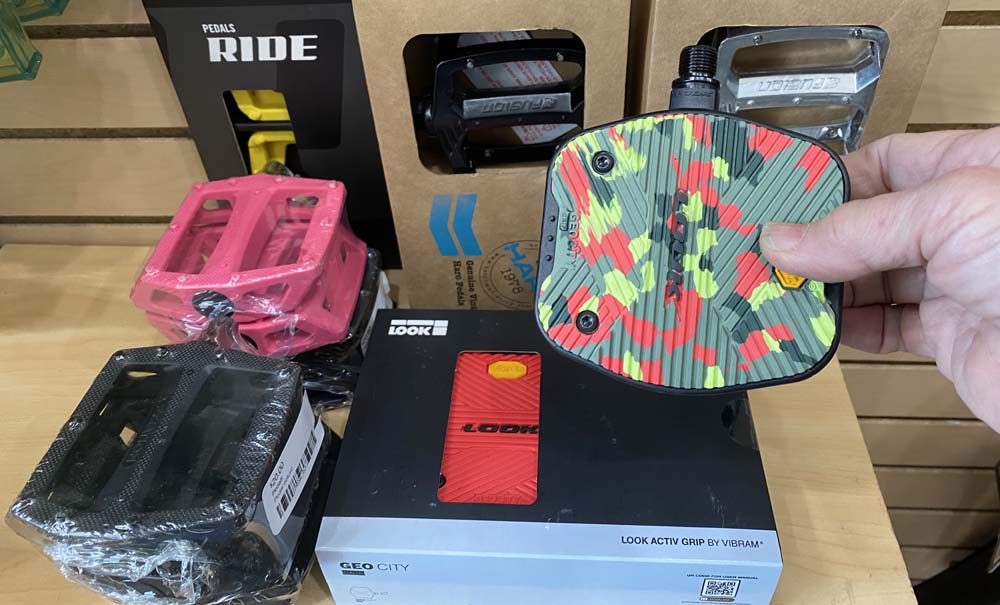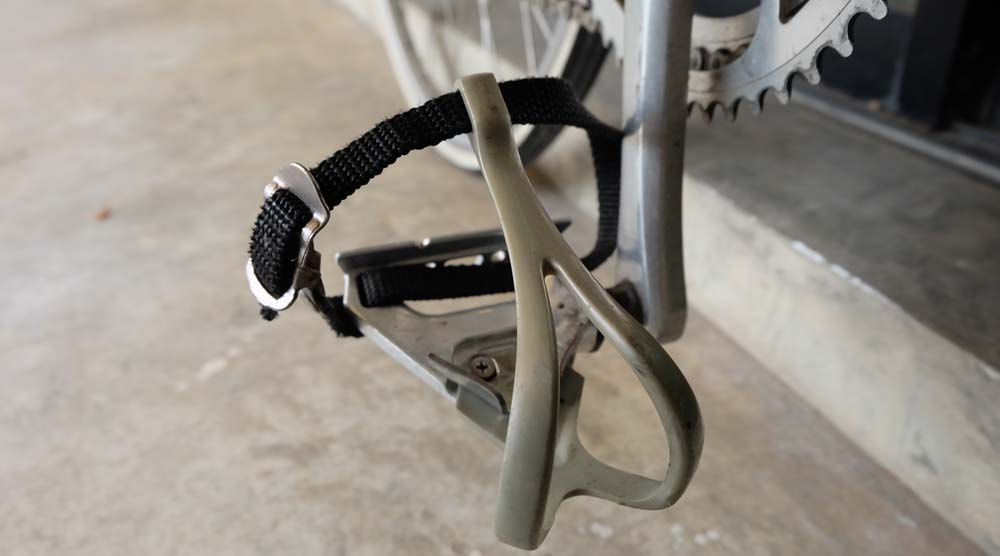 If you're still riding around with the basic pedals that came with your bike it is time to make an upgrade. Pedals that come on new bikes are generally designed to meet a low price point and do not take into consideration your unique riding style and requirements. Due to their constant movement and force placed on them pedals wear out quickly. Bike pedals come in a variety of shapes, styles, and sizes and are easy to upgrade so knowing why and when to do this is worth investigating. The Role of Pedals on a Bike Bike pedals are one of the three contact points the rider has on a bike, the other two being the saddle and handlebars. Pedals are universal in their purpose: 1) put power to the drivetrain, 2) move the rear wheel, and 3) propel the bike forward. But even though the purpose of a set of pedals on a bike is clear, it is accomplished with many different designs and materials that we will review below. Reasons to Upgrade Pedals
Considerations for Choosing Pedals Depending on your experience level and the type of riding you do, there are different types of pedals that can optimize your ride. Some things to think about are:
Types of Pedals There are three general types of pedals, each has pros and cons and which one is best for you will depend on your requirements. 1. Platform Platform pedals are the style that comes standard on most bikes. There are basically two axle sizes, ½ inch, common on kids and some vintage bikes, and 9/16 inch. They can be two sided pedals with the same style on each side so you do not need to rotate the pedal to put your foot on it, or one sided with a different style on each side. A one sided pedal is good for different types of shoes so you do not have to change your pedals each time you want a different configuration. They are made from metal or plastic or a combination of both and some have stationary or replaceable pins to grip your shoe. Some have reflectors or lights on the sides and come in a variety of colors to customize your ride. While they are available at a value price point starting at $10 for a pair, there are high-end platform pedals you can upgrade to for $100 or more made of lightweight aluminum and finely machined bearings in the axle for a smooth, easy rotation. PROS
2. Toe Clips A system of toe cages and straps was developed over a hundred years ago for bike pedals as a way to secure feet to the bike and allow power to be applied on the upstroke as well the downstroke. This is especially beneficial when pedaling up hills. Metal or plastic cages combined with leather or woven nylon straps attach to platforms designed to accommodate toe clips. Slots are needed to insert the straps so not all platform pedals can be converted to toe clips. PROS
3. Clipless Toe clips described above were popular until the 1980s when an alternative pedal system was developed where a cleat installed on the bottom of a shoe literally clipped into the pedal to hold the shoe/foot on the pedal. The nomenclature is a little confusing, but these are called clipless to differentiate them from the clipped-in system of toe clips. Within clipless pedals are a variety of styles but the general method they function is the same. There are three parts to the system; the shoe, the pedal and the shoe cleat that is mounted on the underside of the shoe. A two, three, or four hole cleat attaches to the bottom of a cycling specific shoe and this clicks into the bike pedal via a spring loaded mounting system. The cleat is clicked into the pedal by exerting downward force with the foot and is released by twisting the foot laterally to unclip the cleat. The spring mechanism on the pedal is able to be adjusted tighter or looser depending on how secure you want the shoe to be on the pedal on the upstroke and how easy you want it to be able to unclick it. How much your foot can move side to side before unclipping is called "pedal float." Options include single sided (platform on one side and clipless on the other) or double sided (clipless on both sides), with or without pins, small or large platform for the shoe, and rechargeable lights on the sides. The two-hole cleat design is popular for mountain, casual, commuter, touring, and some road bikes. Named after the leading manufacturer of this pedal type, they are often referred to as SPD pedals (Shimano Pedaling Dynamics) although there are many other manufacturers of this design. In this system two holes are designed under the ball of the shoe and the cleat can be adjusted slightly forward, backward, and laterally. The cleat is recessed to the cycling shoe making it easier to walk off the bike although it is a little harder to clip in. The three-hole cleat design is popular for road biking. This cleat protrudes out on the bottom of the shoe making it easier for the shoe to clip into the pedal and it covers more surface area enabling it to withstand the pressure on the tendons of the foot and burning sensation that can be created pedaling hard on a road bike. These are often referred to as Look pedals after the company that developed them. Since the cleat is plastic, they are usually lighter than two-hole cleat systems. The four-hole cleat design can be found on pedals from Speedplay and Time that tweaks the force applied. PROS
Options for a pedal upgrade on your bike range from the simplicity of a flat pedal to the cost efficient toe-clip to the modern clipless pedal system. A fresh start with new pedals can enhance your performance add more enjoyment and safety to your ride.
Comments are closed.
|
Earth Rider Blog about CycingAuthorSharon Kaminecki and others comment on adventures in bicycling and other stories Categories
All
Archives
August 2023
|






